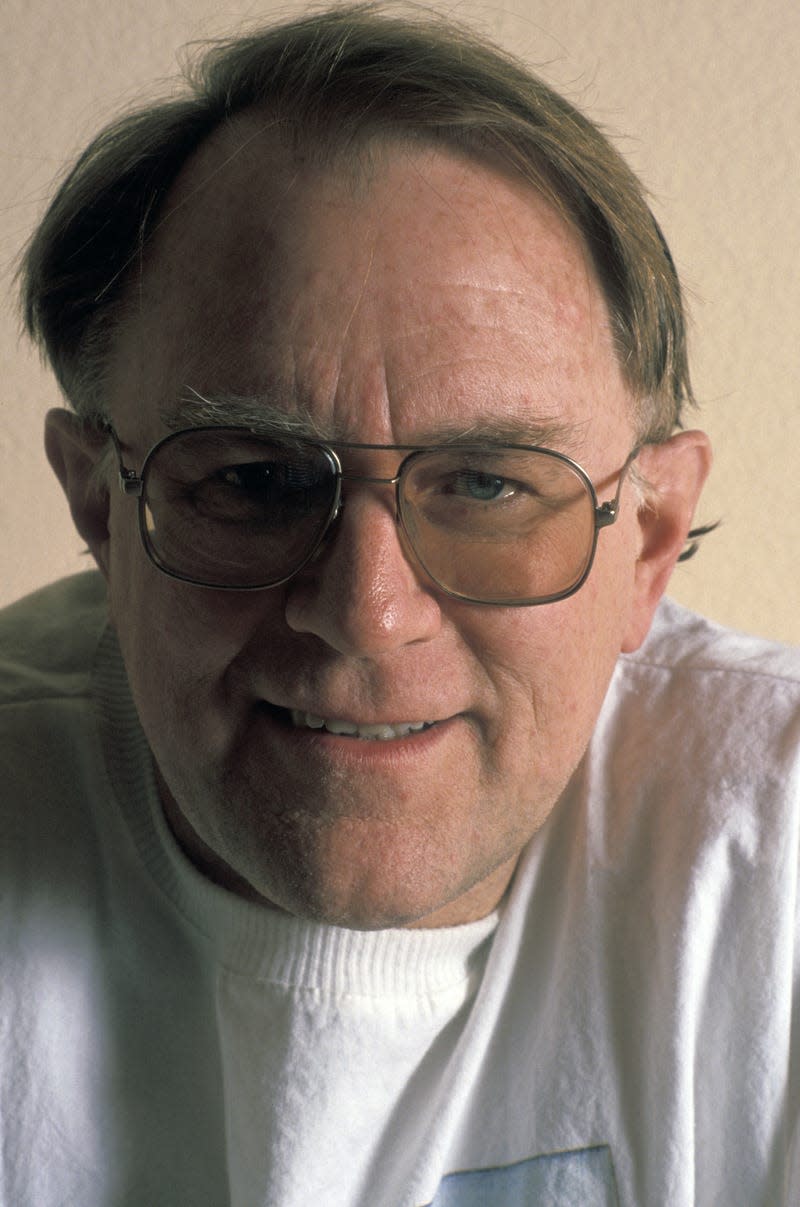Gordon Bell, Legendary Designer of Computers, Dies at 89
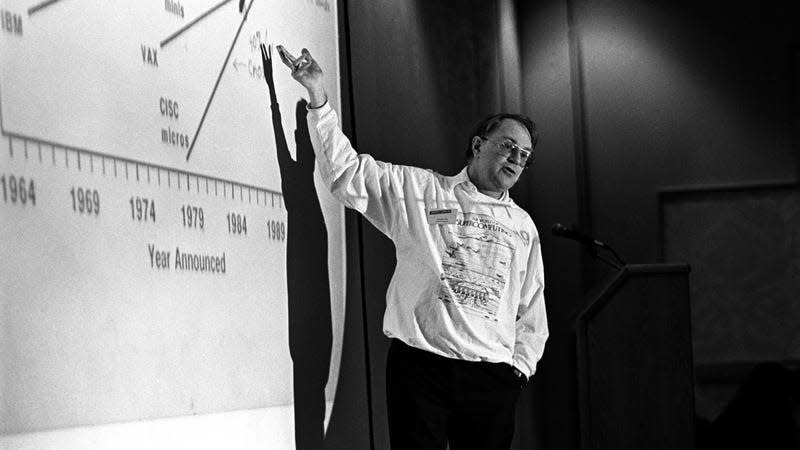
C. Gordon Bell, a true visionary in the world of computing who helped design some of the first minicomputers in the 1960s, died May 17 at the age of 89, according to a new report from the New York Times Tuesday. Bell died in Coronado, California from pneumonia according to the Times, which cites an unnamed family member of Bell.
Bell attended MIT in the mid-1950s and went to work in 1960 for Digital Equipment Corporation, where he started designing computers like the PDP-8, the first commercially successful minicomputer. The relatively small PDP-8 was revolutionary when it was introduced in 1965 because computers of the time were expensive and enormous, sometimes the size of entire rooms.
In fact, the PDP-8 was one of the computers used in the earliest days of the ARPANET, the precursor to the modern internet that made its first connection in 1969. As the Times notes, some people called Bell the “Frank Lloyd Wright of computers” for his incredibly visionary thinking in the world of technology.
Bell spent 23 years at Digital Equipment Corporation as vice president of research and development before leaving and co-founding his own companies, Encore Computer and Ardent Computer. In 1986, Bell joined the National Science Foundation and advised Microsoft in the early 1990s before joining the company as a senior researcher in 1995.
Bell was born Aug. 19, 1934, in Kirksville, Missouri, and had health problems as a child that kept him home, even spending much of his time at 7 years old confined to bed. But Bell was a born tinkerer, even as he struggled with his health.
As the Times explains:
He spent his confinement wiring circuits, running chemistry experiments and cutting out puzzles with a jigsaw. After he recovered, he spent countless hours in his father’s shop learning about electrical repair. By age 12, he was a professional electrician — installing the first home dishwashers, fixing motors and tearing apart mechanical gadgets to rebuild them.
How visionary was Bell? You might be seeing headlines this week about Microsoft’s new AI-powered feature called Recall, which tries to capture everything you’re doing on your computer, or you could be hearing about the latest AI devices that promise to provide instant information about what’s taking place in your world. Bell was way ahead of the curve, as you can see from his appearance on the cover of Fast Company in the November 2006 issue.
Bell’s idea was dubbed MyLifeBits, which allowed him to capture phone calls, message transcripts, emails, and every other piece of information in his life as a kind of experiment to save his daily existence.
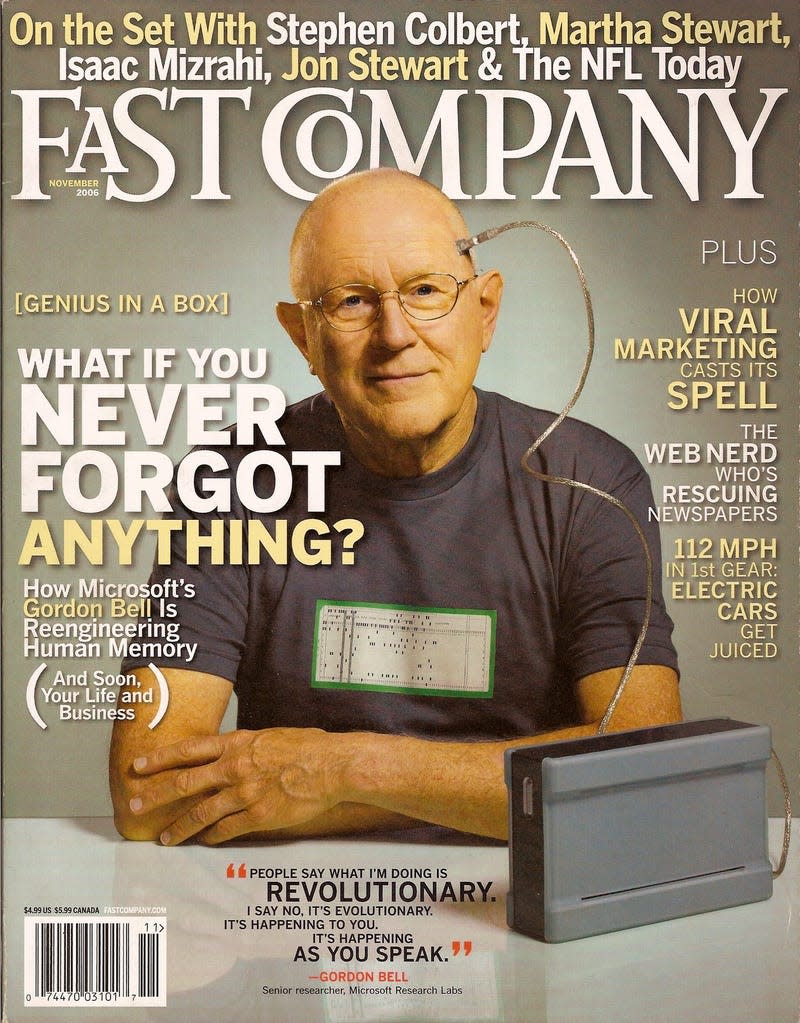
Yes, that’s Bell with his head plugged into a hard drive, back when he was working at Microsoft. The idea was that soon you’d be able to document everything happening in front of you, complete with a camera hanging around his neck that took a photo every 60 seconds. It was a wild idea at the time, but one that feels much more normal here almost 20 years later.
But that was the kind of guy Bell was. The computer pioneer was always looking ten steps ahead and building that version of the world. Click through to see more photos of Bell, along with what the PDP-8 looked like in its heyday, before the personal computer revolution of the 1980s.
The PDP-8
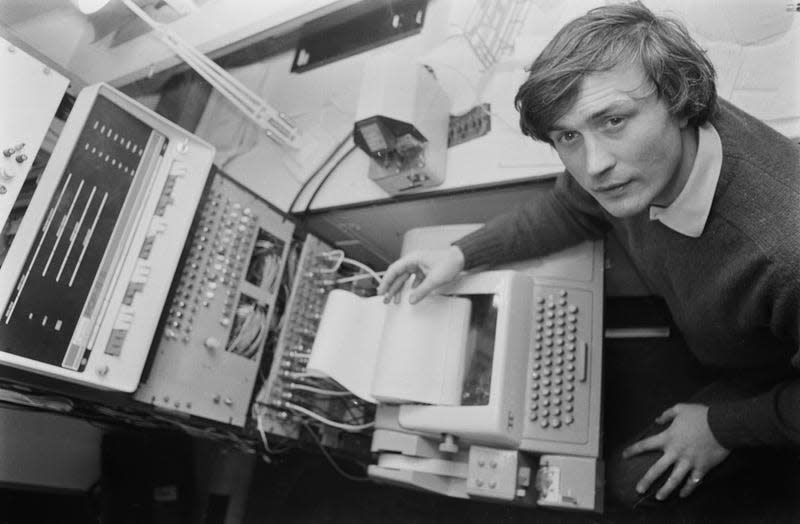
Bell in Australia in 2003
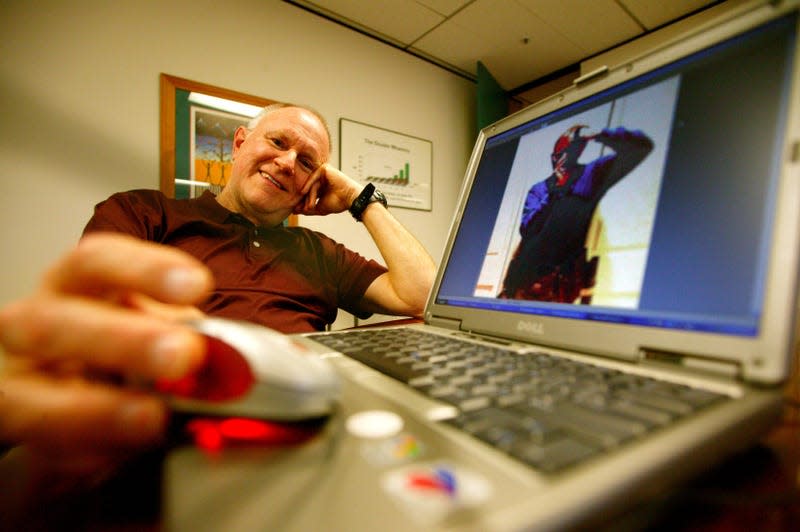
Bell in 1989
